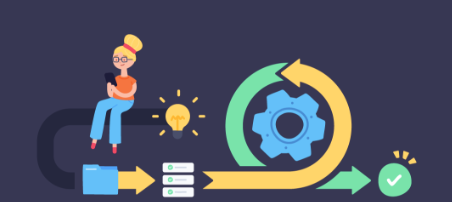Software engineering methodologies play a vital role in the successful development and delivery of software projects. Two of the most commonly known methodologies are Agile and Waterfall. However, as technology and industry demands evolve, new methodologies have emerged to address the challenges of modern software development. In this blog, we will explore the Agile and Waterfall methodologies, discuss their strengths and weaknesses, and also touch upon some alternative approaches that go beyond these traditional frameworks.
Waterfall Methodology:
The Waterfall methodology is a linear, sequential approach to software development. It follows a strict, step-by-step process where each phase is completed before moving on to the next. The phases typically include requirements gathering, design, implementation, testing, deployment, and maintenance. Waterfall is characterized by its upfront planning and documentation, making it suitable for projects with well-defined and stable requirements.
Strengths:
Clear project structure and defined deliverables.
Well-suited for projects with stable and unchanging requirements.
Emphasis on documentation ensures traceability and accountability.
Suitable for projects with a hierarchical and rigid organizational structure.
Weaknesses:
Limited flexibility to accommodate changing requirements.
Long feedback cycles with limited client involvement until the later stages.
Potential for delays and cost overruns if issues are identified late in the process.
Lack of adaptability to dynamic market conditions.
Agile Methodology:
Agile is an iterative and incremental software development approach that prioritizes adaptability and customer collaboration. It emphasizes self-organizing teams, continuous feedback, and incremental development. Agile methodologies, such as Scrum and Kanban, break the project into smaller iterations and sprints, where requirements are regularly reviewed and adjusted based on client and stakeholder feedback.
Strengths:
Increased flexibility to accommodate changing requirements and priorities.
Frequent client involvement allows for better alignment with customer needs.
Early and continuous delivery of working software promotes customer satisfaction.
Encourages collaboration, transparency, and adaptive planning.
Better risk management through iterative testing and feedback loops.
Weaknesses:
Requires active client participation throughout the project.
Lack of detailed upfront planning may lead to scope creep or incomplete requirements.
Can be challenging for large-scale projects or projects with distributed teams.
Requires disciplined project management and a high level of team coordination.
Beyond Agile and Waterfall:
While Agile and Waterfall are widely known, several alternative methodologies have gained popularity in recent years, catering to specific project needs. Some notable methodologies include:
Lean: Derived from manufacturing principles, Lean focuses on maximizing customer value by minimizing waste and optimizing efficiency. It emphasizes continuous improvement and streamlining processes.
DevOps: DevOps promotes closer collaboration between software development and IT operations teams to ensure faster and more reliable software delivery. It focuses on automation, continuous integration, and continuous deployment.
Spiral: The Spiral methodology combines elements of both Waterfall and Agile approaches. It involves a risk-driven iterative process that allows for progressive development, risk mitigation, and early user feedback.
Kanban: Kanban is a visual project management approach that emphasizes continuous flow and limits work in progress. It allows teams to visualize their workflow, identify bottlenecks, and optimize resource allocation.
Conclusion:
In the dynamic world of software engineering, selecting the right methodology is crucial for project success. Agile and Waterfall remain popular choices, each with its own strengths and weaknesses. However, it is essential to explore alternative methodologies that may better align with project requirements and organizational culture. From Lean to DevOps, Spiral to Kanban, software engineering methodologies continue to evolve, providing developers and project managers with a diverse toolbox to meet the challenges of modern software development.




Leave Comment